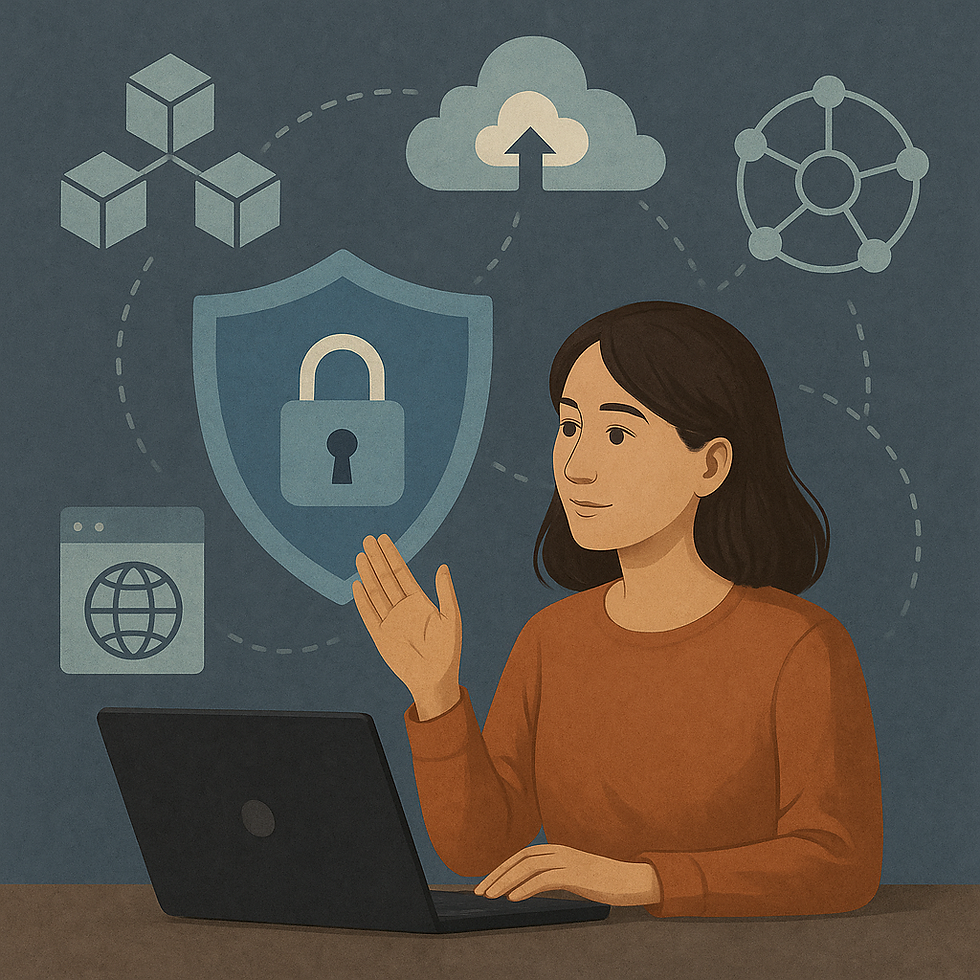Autonomous AI Attacks: The New Cybersecurity Battlefield
- fleurtechmedia
- Sep 15
- 3 min read

The world of cybersecurity is changing faster than ever, and 2025 is shaping up to be the year when artificial intelligence doesn’t just help defenders—it also powers attackers. We’re now seeing the rise of autonomous AI-driven cyberattacks, where artificial intelligence agents are capable of carrying out entire attack campaigns with little to no human direction.
This shift is more than just an upgrade to phishing emails or malware. It represents a new battlefield where speed, scale, and adaptability favor the attackers—unless organizations prepare now.
What Are Autonomous AI Attacks?
Imagine an AI system that can research potential targets, generate convincing phishing emails, adapt when it encounters firewalls, and even move laterally through a company’s network without a human guiding its every step. That’s what makes these attacks dangerous: they are not simply AI-assisted, but increasingly AI-operated. Tasks that once required teams of hackers can now be automated. Everything from scanning for vulnerabilities to forging documents such as résumés or IDs can be handled by an AI agent. The result is a faster, cheaper, and harder-to-detect attack method that scales at a pace humans can’t match.
Why This Is a Hot Topic in 2025
Several trends are fueling this rise in AI-powered attacks. First, large language models and generative AI tools have become powerful enough to write code, mimic personal writing styles, and generate realistic deepfakes that can fool even seasoned professionals. Second, organizations are more exposed than ever before. Hybrid cloud environments, connected supply chains, and the growing problem of “shadow AI” tools used by employees without oversight have created new entry points for attackers. Third, regulation and governance around AI still lag behind the technology itself. While there is no shortage of conversations about AI ethics, AI security, and even preparing for post-quantum cryptography, implementation across industries remains slow. Attackers are taking advantage of that delay.
Real-World Examples
These threats aren’t theoretical—they’re already being put into action. Reports now suggest that as much as 80 percent of ransomware groups are using AI to power their operations. In some cases, this means automating reconnaissance or using AI to generate endless variations of phishing attempts. In more sophisticated cases, state-sponsored groups in countries like North Korea and China have been caught using AI to forge military IDs, create realistic résumés, and manipulate social media to infiltrate companies. These incidents reveal just how quickly attackers are adopting the technology, and they underscore the urgency of building stronger defenses.
How to Defend Against AI-Powered Threats
For organizations, defending against these threats requires a mindset shift. Adopting Zero Trust principles is critical, as assuming that users or devices are safe leaves too many gaps for AI-powered attacks to exploit. Defenders also need to embrace AI themselves, deploying intelligent monitoring tools that can detect unusual patterns and behaviors at machine speed. Securing the supply chain has become just as important as securing the internal network, since attackers increasingly target the weakest links among third parties and vendors. Preparing for post-quantum cryptography may sound futuristic, but forward-looking organizations are already beginning to test quantum-safe algorithms to ensure they won’t be caught off guard. Equally important is governance and education—companies must create clear policies for how AI is used internally while training employees to recognize the risks that come with it.
Autonomous AI attacks aren’t just another buzzword making the rounds in the cybersecurity community. They are here now, reshaping the threat landscape in ways that demand attention. Organizations that wait until a crisis hits will find themselves on the defensive, trying to catch up after damage has already been done. The best path forward is proactive: invest in AI-based defenses, tighten identity and access controls, harden supply chain security, and prepare for the next wave of cryptographic challenges.
Cybersecurity has always been a game of cat and mouse. With autonomous AI in play, the mouse just got much faster—and the cat will need to evolve quickly to keep up.



Comments